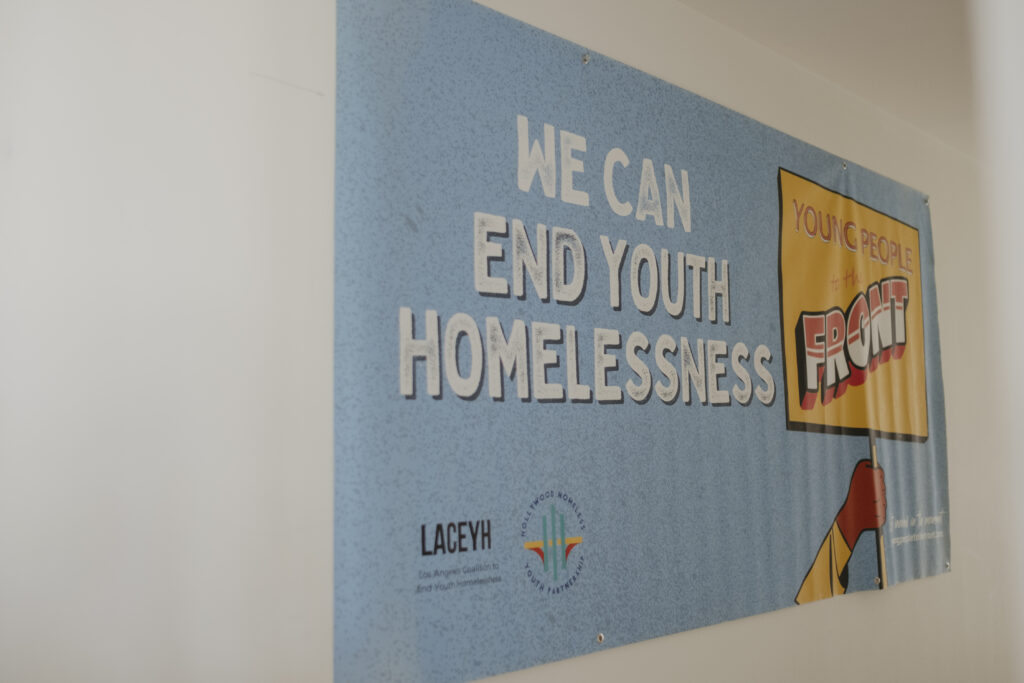
The Conrad N. Hilton Foundation partnered with Abt Global to produce three reports to help build our knowledge base about homelessness prevention strategies, which are shifting to more flexible and inclusive models to better support people at risk of homelessness. The first report provides a broad overview of programs and interventions that are focused on identifying and supporting people that are at risk in Los Angeles County. The second brief summarizes existing programs and makes recommendations about specific prevention strategies for foster youth, and the third addresses homelessness among individuals exiting incarceration.
Report #1: Preventing Homelessness Among High-Risk Individuals in L.A. County
Researchers set out to better understand the following: how prevention programs for at-risk populations define success, and how success is measured; what programs exist within the county to provide housing stabilization for people at risk; and what gaps and opportunities exist for improvement for existing programs. Report authors define success as stabilizing housing and preventing entry into homelessness, with an emphasis on timely, flexible support.
The report finds that L.A. County’s homelessness prevention system for people at risk of homelessness requires a multi-pronged approach reflecting the complexity of housing instability across populations. These strategies include:
Further, prevention strategies work best when they integrate multiple entry points and allows those at risk—along with community members and service providers—to access a range of support options. Report authors say future investments through Measure A (passed in 2024) and the newly formed LACAHSA must prioritize inclusive flexible funds, eligibility criteria, provide better support for frontline workers, and build more robust systems for data sharing and coordination. Additionally, future investments should include homelessness prevention that address racial disparities.
Read the full report to learn more.

Report #2: Preventing Homelessness Among Transition-Age Foster Youth in L.A. County
As young people transition out of the foster youth system, they face a heightened risk of homelessness. Each year, more than 1,140 youth exit foster care in LA County, with 20 to 40 percent experiencing housing instability or homelessness soon after.
The recent report by Abt Global summarizes existing services and programs in LA County and synthesizes insights from interviews with service providers, system administrators, and individuals with lived experience of homelessness to highlight current system strengths and identify opportunities for improvement to prevent homelessness among foster youth. Interviews highlight five practices that are helping youth maintain housing stability as they leave care: individualized services, a focus on quality over quantity, skilled and representative staff, flexibility, and meaningful financial support.
The report includes 9 key recommendations for policy, practice and program improvements, including:
Researchers say that support must extend beyond securing housing: “Youth need access to robust mental health care and financial literacy and assistance, and a greater emphasis on education and employment readiness—skills that not only help them transition out of programs but also sustain housing stability over the long term.”
Read the full report to learn more.
Report #3: Preventing Homelessness Among People Exiting Jail or Prison
People who were previously incarcerated are nearly ten times more likely to be unhoused than those who have not spent time in jail or prison. LA County faces one of the most complex reentry challenges in the country: the convergence of a severe housing crisis with the largest jail system in the United States.
While compounded by LA’s housing crisis, individuals leaving jail in Los Angeles County experience the same challenges as those in many major cities, including poor credit history, prohibitive application fees and security deposits, public housing restrictions, background checks, landlord bias, and parole or probation conditions that limit their housing options. This report by Abt Global explores currently available programs and services that prevent immediate homelessness at the time of release, highlights recent shifts in policy, and identifies opportunities for improvement.
Authors point out that LA County has made recent, important strides to support individuals at risk of homelessness following incarceration including the creation of a dedicated agency to lead these efforts: the Justice Care and Opportunities Department (JCOD), an independent department that began operations in November 2022. JCOD and the Office of Diversion and Reentry (ODR) share responsibility for LA County’s reentry population, along with outside programs that fill in gaps for certain populations.
Recommendations for improvement include: